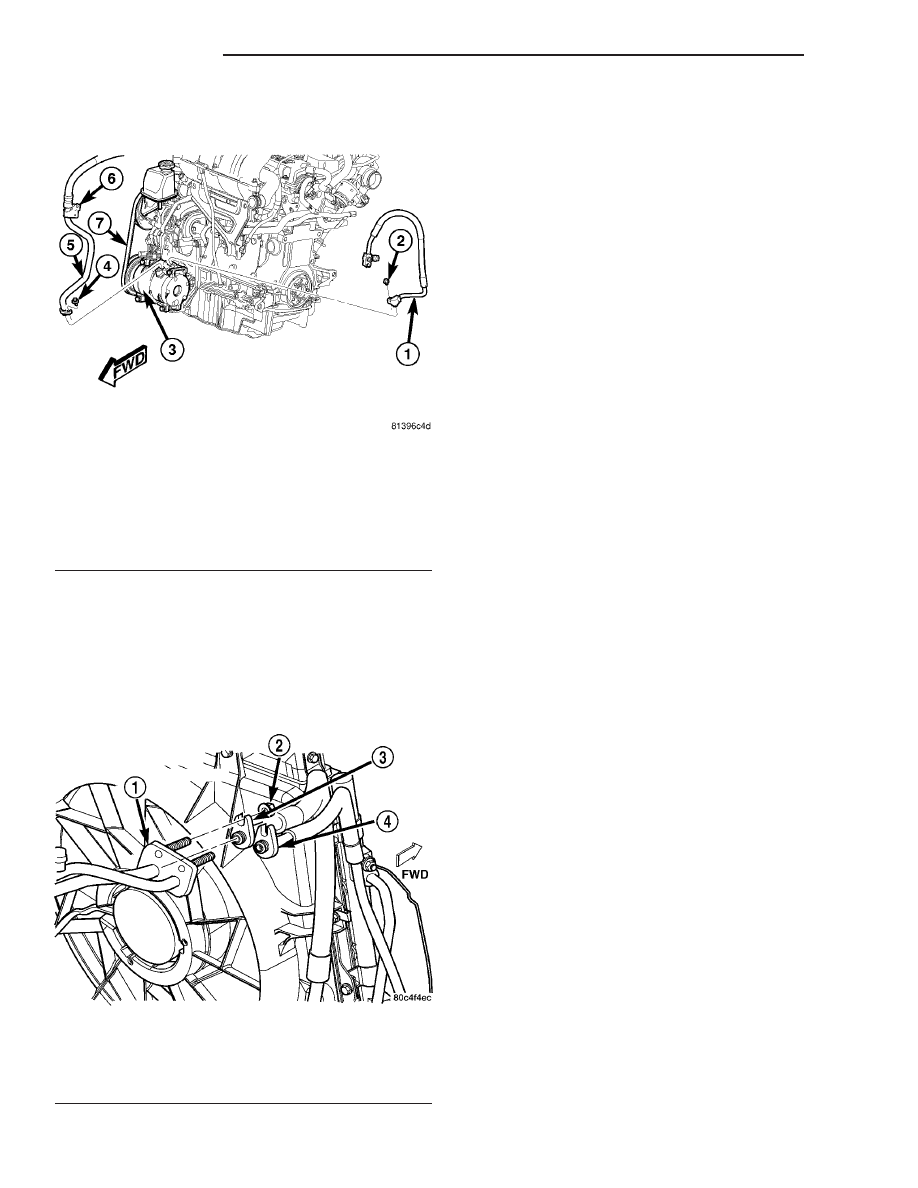Chrysler PT Cruiser. Manual - part 984

(8) Disconnect the A/C suction line from the accu-
mulator tube tapping block and remove and discard
the O-ring seal.
(9) Install plugs in, or tape over the opened suc-
tion line fitting and the accumulator tube tapping
block outlet port.
(10) Remove the A/C suction line from the engine
compartment.
INSTALLATION
NOTE: Replacement of the refrigerant line O-ring
seals is required anytime a refrigerant line is
opened. Failure to replace the rubber O-ring seals
could result in a refrigerant system leak.
(1) Position the A/C suction line into the engine
compartment.
(2) Remove the tape or plugs from the suction line
fitting and the accumulator tube tapping block.
(3) Lubricate a new rubber O-ring seal with clean
refrigerant oil and install it on the suction line fit-
ting. Use only the specified O-ring as it is made of a
special material for the R-134a system. Use only
refrigerant oil of the type recommended for the A/C
compressor in the vehicle.
(4) Connect the A/C suction line to the accumula-
tor tube tapping block.
(5) Install the nut that secures the A/C suction
line to the accumulator tube tapping block. Tighten
the nut to 5 N·m (44 in. lbs.).
(6) If equipped with the 2.4L Turbo engine, install
the nut that secures the suction line retaining
bracket to the thermostat housing stud bolt. Tighten
the nut to 2 N·m (17 in. lbs.).
(7) Remove the tape or plugs from the suction line
fitting and the compressor port.
(8) Lubricate a new rubber O-ring seal with clean
refrigerant oil and install it on the suction line fit-
ting. Use only the specified O-ring as it is made of a
special material for the R-134a system. Use only
refrigerant oil of the type recommended for the A/C
compressor in the vehicle.
(9) Connect the A/C suction line to the A/C com-
pressor.
(10) Install the bolt that secures the A/C suction
line to the A/C compressor. Tighten the bolt to 12
N·m (106 in. lbs.).
(11) Reconnect the negative battery cable.
(12) Evacuate the refrigerant system (Refer to 24 -
HEATING & AIR CONDITIONING - STANDARD
PROCEDURE - REFRIGERANT SYSTEM EVACU-
ATE).
(13) Recharge the refrigerant system (Refer to 24 -
HEATING & AIR CONDITIONING - STANDARD
PROCEDURE
-
REFRIGERANT
SYSTEM
CHARGE).
SERVICE PORT VALVE CORE
DESCRIPTION
The A/C service port valve cores are serviceable
items (Fig. 24) and (Fig. 25). The low side valve is
located on the liquid line near the accumulator. The
Fig. 22 A/C Compressor Refrigerant Lines - Typical
1 - A/C DISCHARGE LINE
2 - BOLT
3 - A/C COMPRESSOR
4 - BOLT
5 - A/C SUCTION LINE
6 - SUCTION LINE RETAINING BRACKET
7 - ACCESSORY DRIVE BELT
Fig. 23 A/C Refrigerant Lines - Typical
1 - ACCUMULATOR TUBE TAPPING BLOCK
2 - NUT (2)
3 - A/C SUCTION LINE
4 - A/C LIQUID LINE
24 - 58
PLUMBING
PT
SUCTION LINE (Continued)